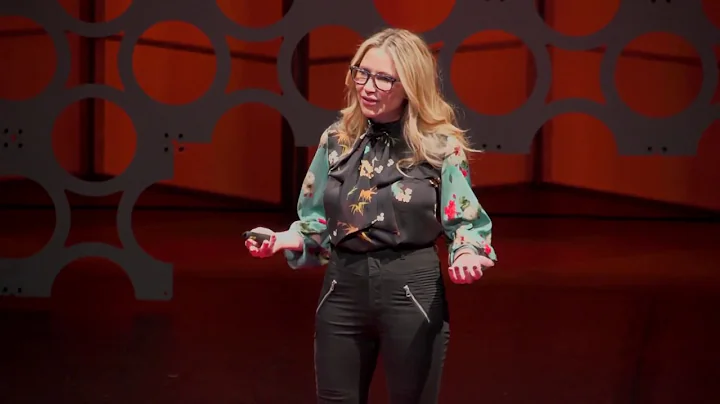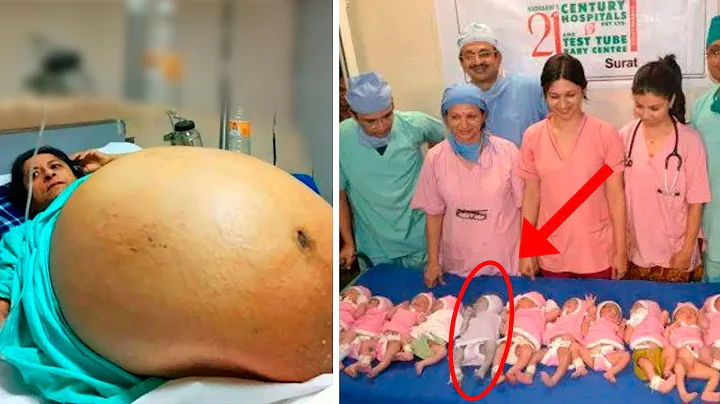

case - subliminal depression
Aunt Wang is a lively and cheerful person, in good health, and her son and daughter-in-law are also very filial. When I retired a few years ago, apart from taking care of my grandson with my wife, my biggest hobby was square dancing.
Aunt Wang loved dancing when she was young, and she danced very well, and soon became the "star" of the dance team. I made many friends while dancing. We usually chat together, discuss what to cook, how to take care of ourselves, and form a group to buy groceries. Life is not only joyful but also fulfilling.
html Aunt Wang’s husband died of a sudden illness 47 months ago. Since then, she has become inactive. She always says that her legs have no strength, she doesn’t want to dance, and she stays at home all day long. The son looked at his mother, hoping that more companionship would help her get out of her current state. Travel with Aunt Wang and eat delicious food... However, after trying many methods, Aunt Wang's situation did not improve.
We met Aunt Wang and his family during the implementation of the "National Psychological Care Project for the Elderly". My son introduced us to the above situation. According to the evaluation results combined with the interviews, Aunt Wang's condition does not meet the diagnostic criteria for depression that is generally considered major depressive disorder (MDD). However, the aunt's current emotional problems not only bring trouble to her family, she also feels very painful. Medically, Aunt Wang's emotional state is called "subliminal depression."
The elderly are at increased risk of depression due to physical weakness, disease, disability, and major life changes. A 2017 JAMA study showed that the prevalence of MDD among the elderly is about 2%, while the prevalence of subthreshold depression is as high as 10-15%.
1. What is subliminal depression?
Subthreshold depression refers to a state that does not meet the diagnostic criteria for major depressive disorder (MDD), but has clinically significant depressive symptoms. It mainly includes two categories:
The first category is those who do not meet the MDD symptom criteria (<4>: Including sub-syndromic depression, mild depression, or only 1 to 2 depressive symptoms in the MDD diagnostic criteria with a duration of more than 2 weeks.
Different from MDD (at least two core symptoms and three additional symptoms), patients with subthreshold depression only have 2-4 symptoms of depression, and the symptoms of different patients with subthreshold depression are different, but most patients with subthreshold depression have different symptoms. It includes mild depression, loss of interest, and a certain degree of social dysfunction. Some patients may also experience neurotic symptoms or physical symptoms.
The other category is those that do not meet the MDD disease course indicators (<2>: including recurrent transient depression. It is characterized by lower persistence than MDD, with attacks occurring for about 2-13 days a month. Recurrent transient depression has fewer depressed days per year than MDD (43 days vs. 75 days).
2. What are the dangers of subliminal depression?
The prevalence of subthreshold depression is high. Unlike major depression, which is often diagnosed and treated early, the symptoms of subthreshold depression are atypical, the onset is insidious, and identification is relatively difficult. However, it can still have a significant negative impact on an individual's functioning. In addition to patients feeling pain and reduced happiness, it will also affect the overall harmony and mental health of the family.
Several studies suggest that at least 10%-20% of subthreshold depression will convert to depressive disorder (MDD) within 12 months, with one study showing a conversion rate as high as 28%-41%.
In addition to the high risk of being converted into MDD, subthreshold depression can also aggravate or induce other diseases, such as diabetes, cardiovascular disease, arthritis and asthma, etc. The possible reason is that patients have insufficient motivation to manage their own health.
In a 2013 meta-analysis , the relative risk of death was 1.58 for MDD and 1.33 for subthreshold depression.People with subthreshold depression have a higher risk of suicide than nondepressed individuals.
The high prevalence of subthreshold depression, whether it is the negative impact on oneself and family, or the high suicide rate, reminds us of the importance of timely diagnosis and treatment.
3. How to deal with subliminal depression?
The treatment of subthreshold depression includes drugs, psychology, traditional Chinese medicine treatment, etc. However, both expert consensus and treatment guidelines recommend psychological treatment first.
In psychotherapy, cognitive-behavioral therapy (CBT) for subthreshold depression has received widespread attention for its highly structured and good therapeutic effects.
The author once conducted a systematic review of CBT treatment for subthreshold depression based on existing research, and found that different CBT treatment methods have a certain degree of effect on patients with subthreshold depression. Here are some common treatments.
1. Cognitive-based therapy : Attention bias modification (ABM) training
ABM training mostly uses a point detection paradigm, and the computer program simultaneously presents neutral-negative stimulus pairs, and makes the detection points more Appear at the location where the neutral stimulus rather than the negative stimulus has appeared, to gradually correct the subject's attention bias towards the negative stimulus, thereby keeping the subject away from specific emotional stimuli or negative stimuli.
2. Behavior-based treatment: Behavioral activation
Behavioral activation theory believes that the reduction of pleasant events or the increase of aversive events is the main mechanism for the occurrence and development of depression. From this, behavioral activation training is derived, which is based on the results of the patient's behavioral functional analysis. It arranges a list of positive activities to increase positive reinforcement of behavior and reduce aversive stimuli, including assessment, goal setting, activity monitoring, behavioral activation, homework and other links.
3. New CBT: Internet-based cognitive behavioral therapy (ICBT)
The content of ICBT is the same as traditional CBT, including psychoeducation, structured therapy, homework, etc. ICBT uses computers and the Internet to deliver psychotherapy, making it easier for patients to access and utilize information.
ICBT has two intervention forms. One is for professional therapists to provide certain auxiliary guidance to patients through phone calls, emails, text messages, etc. The other is for patients to complete project requirements independently according to the intervention system and obtain feedback.
In addition, many new CBT techniques such as Mindfulness-Based Cognitive Therapy (MBCT), Acceptance Commitment Therapy (ACT), Dialectical Behavior Therapy (DBT), etc. are also being used to treat patients with depression and subthreshold depression.
review|Wang Jinghua
proofread|Bai Li
Reference source:
1.Kok RM, Reynolds CF 3rd.Management of depression in older adults: a review. JAMA. 2017;317(20):2114-2122.html. 6
2.Biella MM, Borges MK, Strauss J, Mauer S, Martinelli JE, Aprahamian I.Subthreshold depression needs a prime time in old age psychiatry? A narrative review of current evidence. Neuropsychiatr Dis Treat. 2019;15:2763-2772.
3.MacLeod C, Mathews A, Tata P. Attentional bias in emotional disorders[J]. Journal of Abnormal Psychology, 1986, 95(1):15-20.
4.Ritterband L M, Andersson G, Christensen H M, et al. Directions for the International Society for research on Internet Interventions (ISRII)[J]. Journal of Medical Internet research, 2006, 8(3): e23-e23.
5. Ji Yinyin, Fang Yuan, Li Xia. Progress in cognitive behavioral therapy for subthreshold depression[J]. Neurological Diseases and Mental Health, 2022, 22(02): 124-128.
6. Li Yiyun, Tu Jianyuan, Chen Deyi, et al. . Introduction to "subthreshold depression"[J]. Journal of Clinical Psychiatry, 2002, 12(2), 121-122.
Fund support:
1.Shanghai Fifth Round Public Health Three-Year Action Plan GWV-9.2
2. Shanghai Municipal Ginkgo Foundation
Special statement: This article is published by the editor of the Geriatrics Department of Shanghai Mental Health Center!
People with subthreshold depression have a higher risk of suicide than nondepressed individuals.The high prevalence of subthreshold depression, whether it is the negative impact on oneself and family, or the high suicide rate, reminds us of the importance of timely diagnosis and treatment.
3. How to deal with subliminal depression?
The treatment of subthreshold depression includes drugs, psychology, traditional Chinese medicine treatment, etc. However, both expert consensus and treatment guidelines recommend psychological treatment first.
In psychotherapy, cognitive-behavioral therapy (CBT) for subthreshold depression has received widespread attention for its highly structured and good therapeutic effects.
The author once conducted a systematic review of CBT treatment for subthreshold depression based on existing research, and found that different CBT treatment methods have a certain degree of effect on patients with subthreshold depression. Here are some common treatments.
1. Cognitive-based therapy : Attention bias modification (ABM) training
ABM training mostly uses a point detection paradigm, and the computer program simultaneously presents neutral-negative stimulus pairs, and makes the detection points more Appear at the location where the neutral stimulus rather than the negative stimulus has appeared, to gradually correct the subject's attention bias towards the negative stimulus, thereby keeping the subject away from specific emotional stimuli or negative stimuli.
2. Behavior-based treatment: Behavioral activation
Behavioral activation theory believes that the reduction of pleasant events or the increase of aversive events is the main mechanism for the occurrence and development of depression. From this, behavioral activation training is derived, which is based on the results of the patient's behavioral functional analysis. It arranges a list of positive activities to increase positive reinforcement of behavior and reduce aversive stimuli, including assessment, goal setting, activity monitoring, behavioral activation, homework and other links.
3. New CBT: Internet-based cognitive behavioral therapy (ICBT)
The content of ICBT is the same as traditional CBT, including psychoeducation, structured therapy, homework, etc. ICBT uses computers and the Internet to deliver psychotherapy, making it easier for patients to access and utilize information.
ICBT has two intervention forms. One is for professional therapists to provide certain auxiliary guidance to patients through phone calls, emails, text messages, etc. The other is for patients to complete project requirements independently according to the intervention system and obtain feedback.
In addition, many new CBT techniques such as Mindfulness-Based Cognitive Therapy (MBCT), Acceptance Commitment Therapy (ACT), Dialectical Behavior Therapy (DBT), etc. are also being used to treat patients with depression and subthreshold depression.
review|Wang Jinghua
proofread|Bai Li
Reference source:
1.Kok RM, Reynolds CF 3rd.Management of depression in older adults: a review. JAMA. 2017;317(20):2114-2122.html. 6
2.Biella MM, Borges MK, Strauss J, Mauer S, Martinelli JE, Aprahamian I.Subthreshold depression needs a prime time in old age psychiatry? A narrative review of current evidence. Neuropsychiatr Dis Treat. 2019;15:2763-2772.
3.MacLeod C, Mathews A, Tata P. Attentional bias in emotional disorders[J]. Journal of Abnormal Psychology, 1986, 95(1):15-20.
4.Ritterband L M, Andersson G, Christensen H M, et al. Directions for the International Society for research on Internet Interventions (ISRII)[J]. Journal of Medical Internet research, 2006, 8(3): e23-e23.
5. Ji Yinyin, Fang Yuan, Li Xia. Progress in cognitive behavioral therapy for subthreshold depression[J]. Neurological Diseases and Mental Health, 2022, 22(02): 124-128.
6. Li Yiyun, Tu Jianyuan, Chen Deyi, et al. . Introduction to "subthreshold depression"[J]. Journal of Clinical Psychiatry, 2002, 12(2), 121-122.
Fund support:
1.Shanghai Fifth Round Public Health Three-Year Action Plan GWV-9.2
2. Shanghai Municipal Ginkgo Foundation
Special statement: This article is published by the editor of the Geriatrics Department of Shanghai Mental Health Center!











